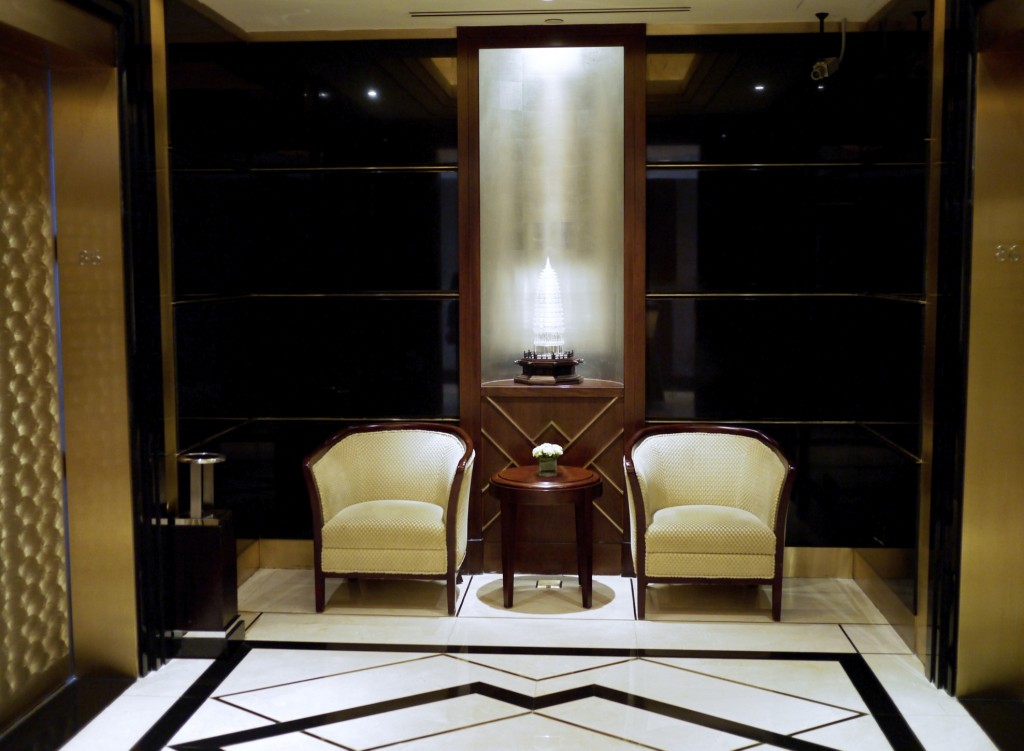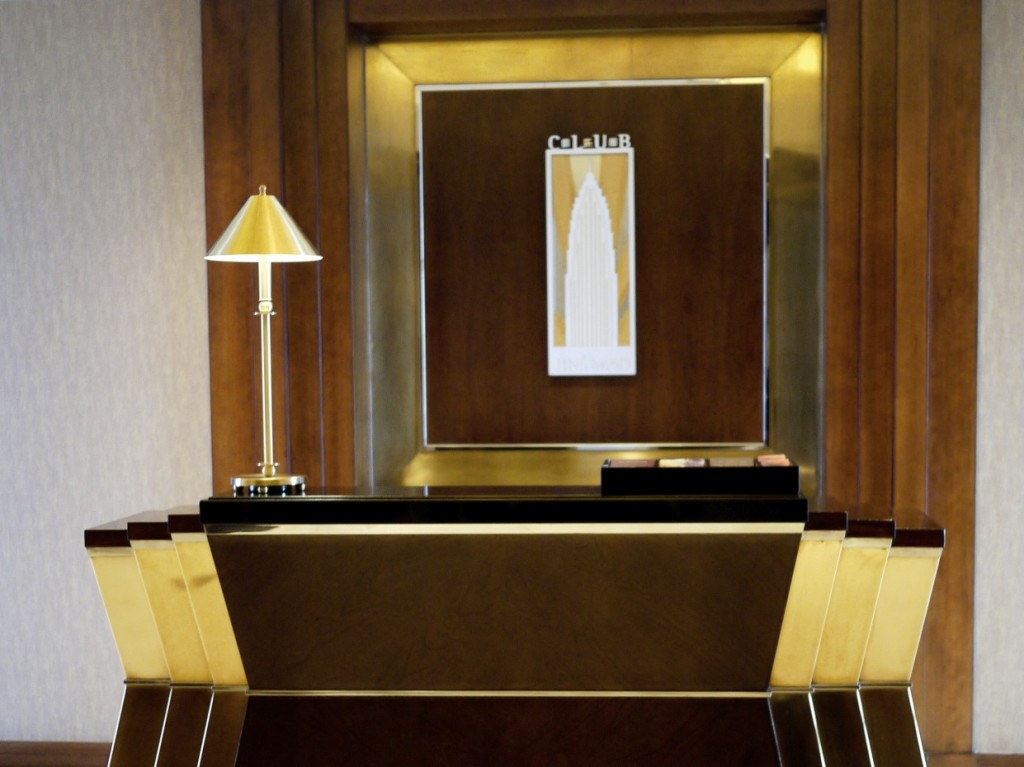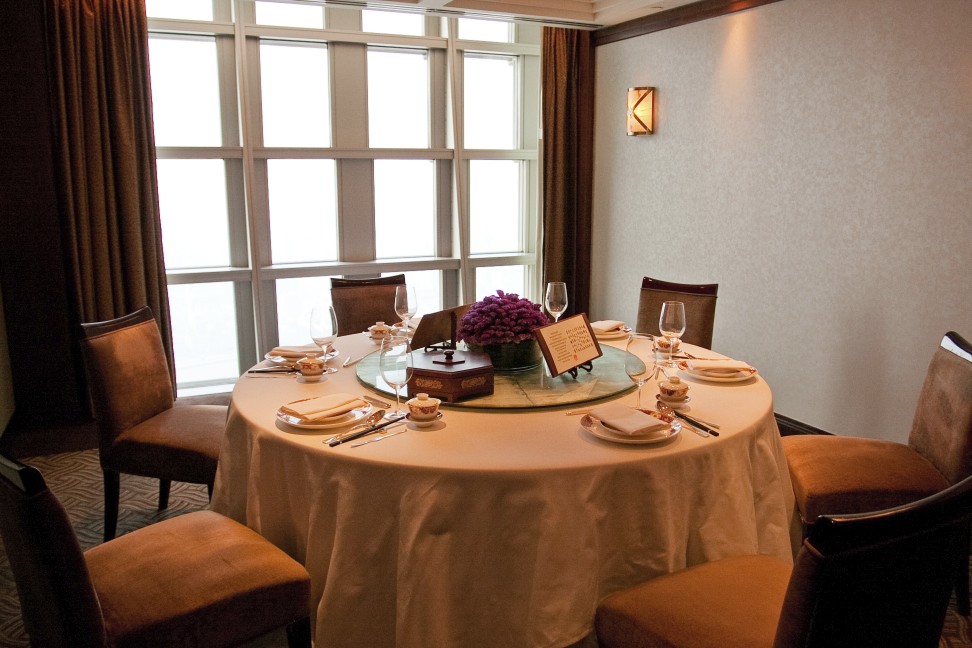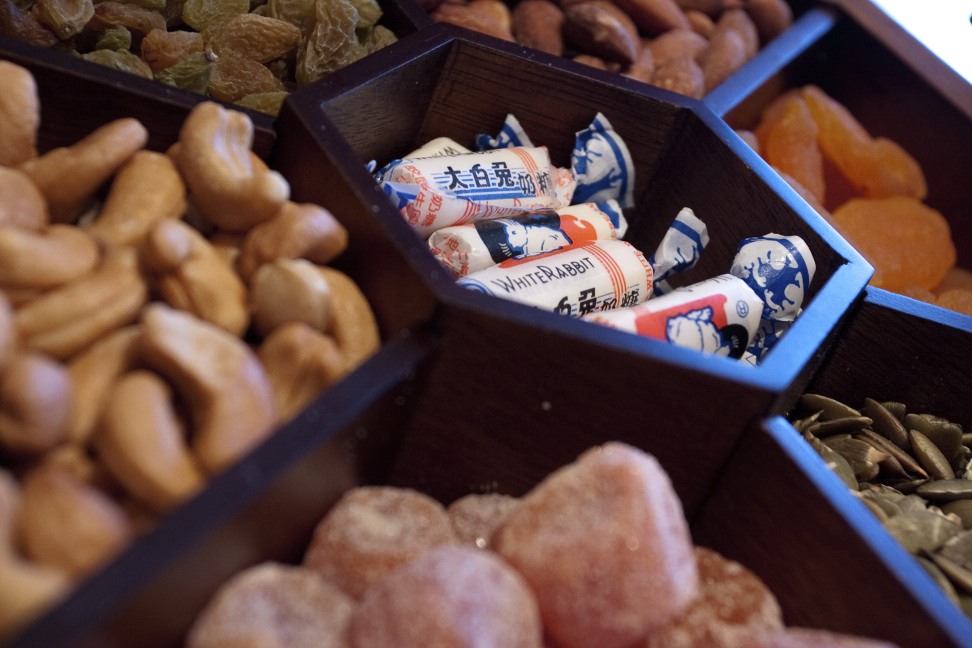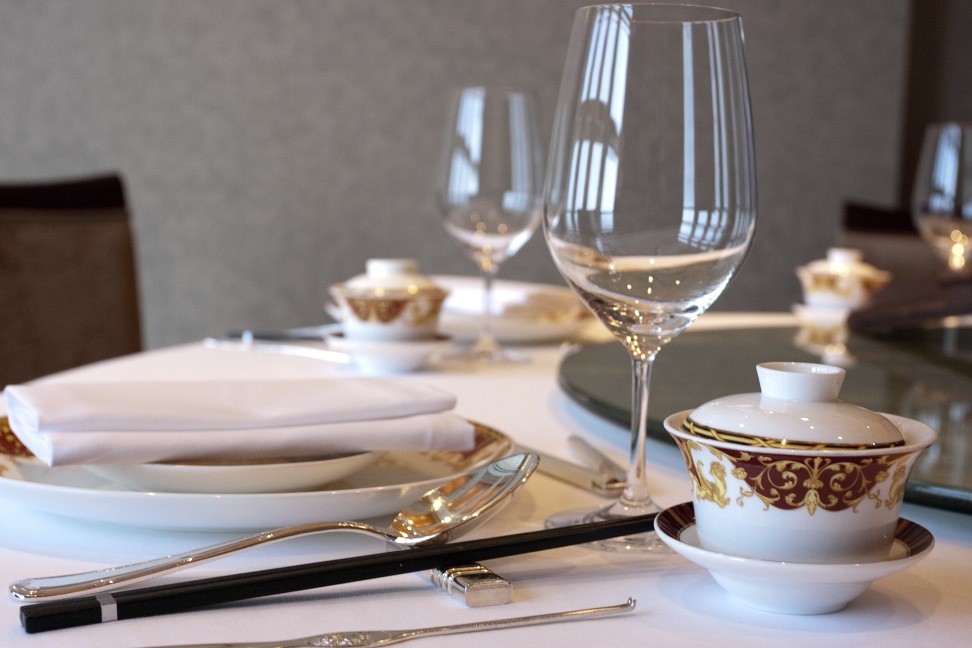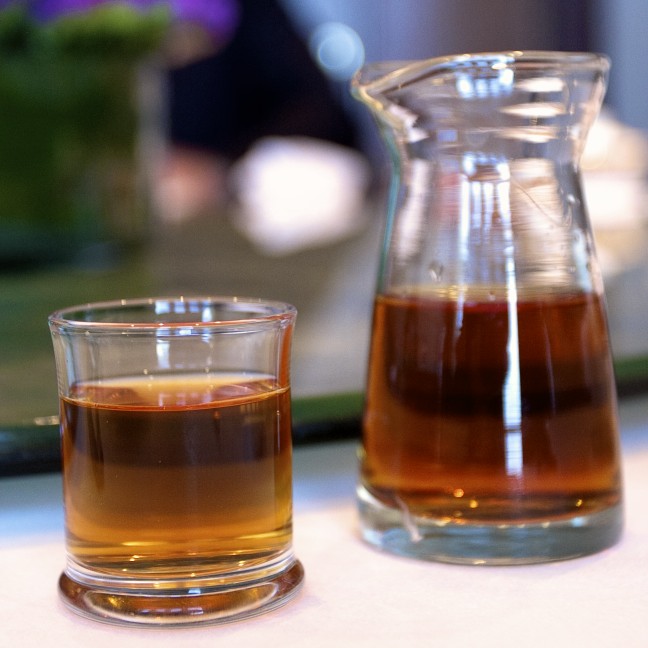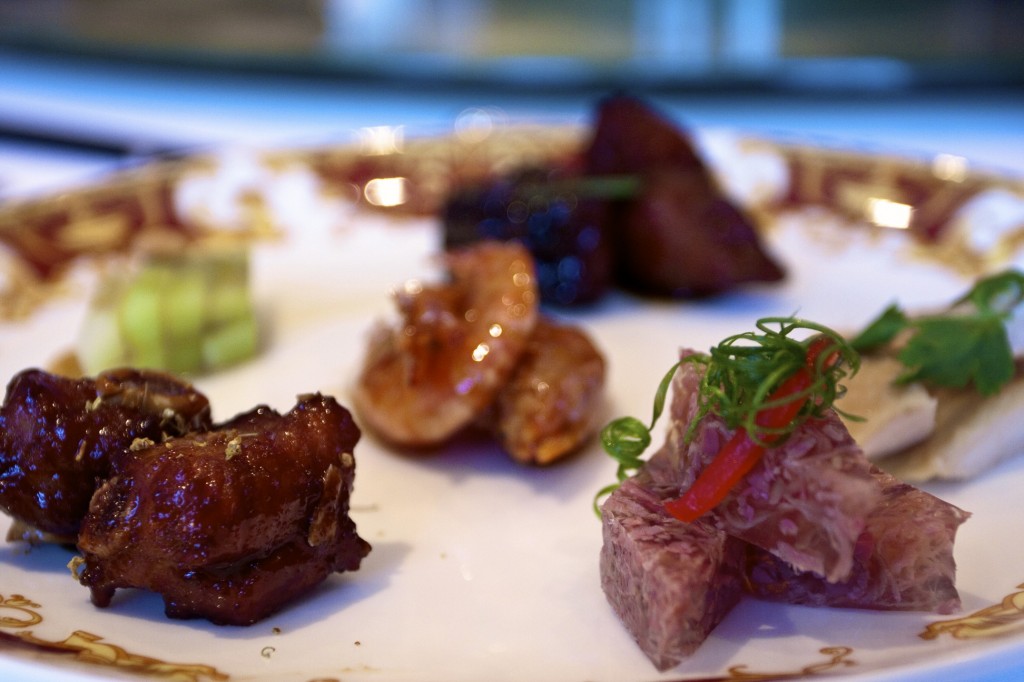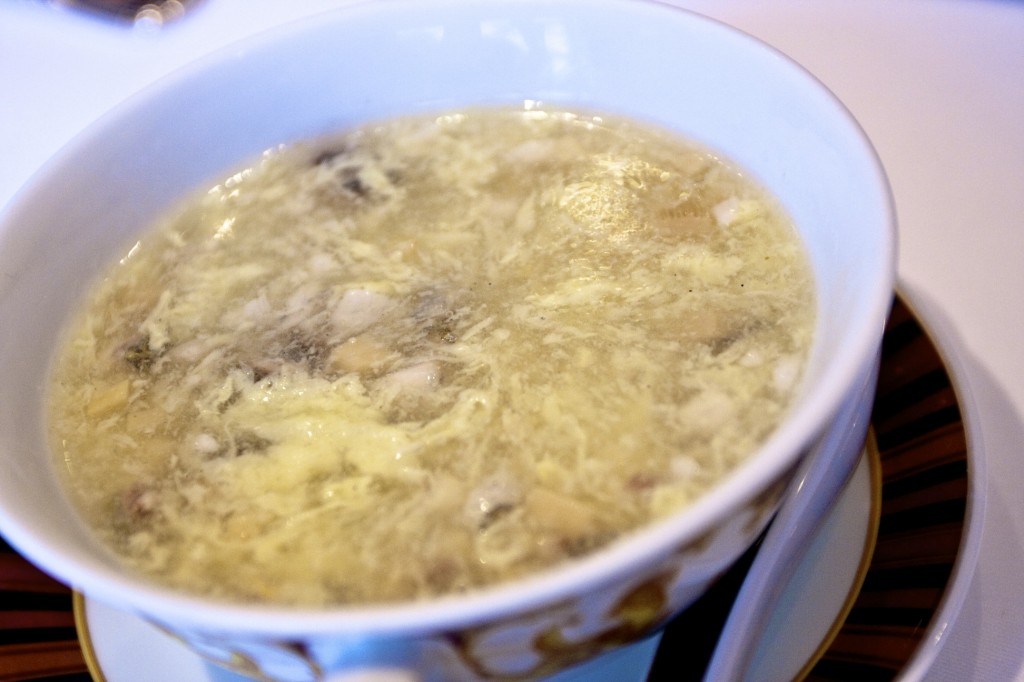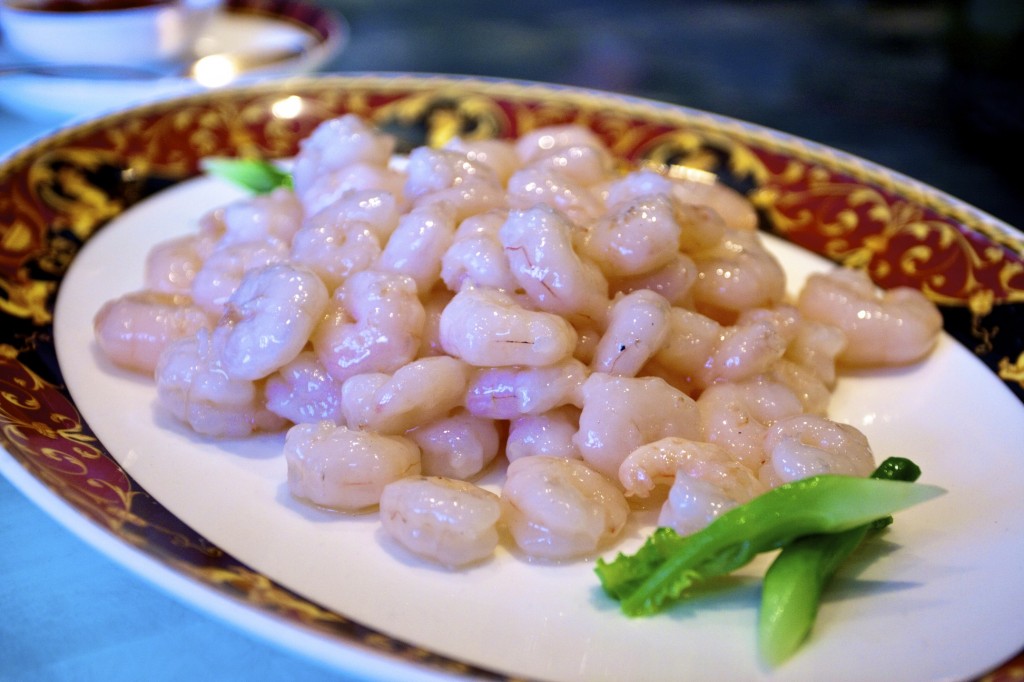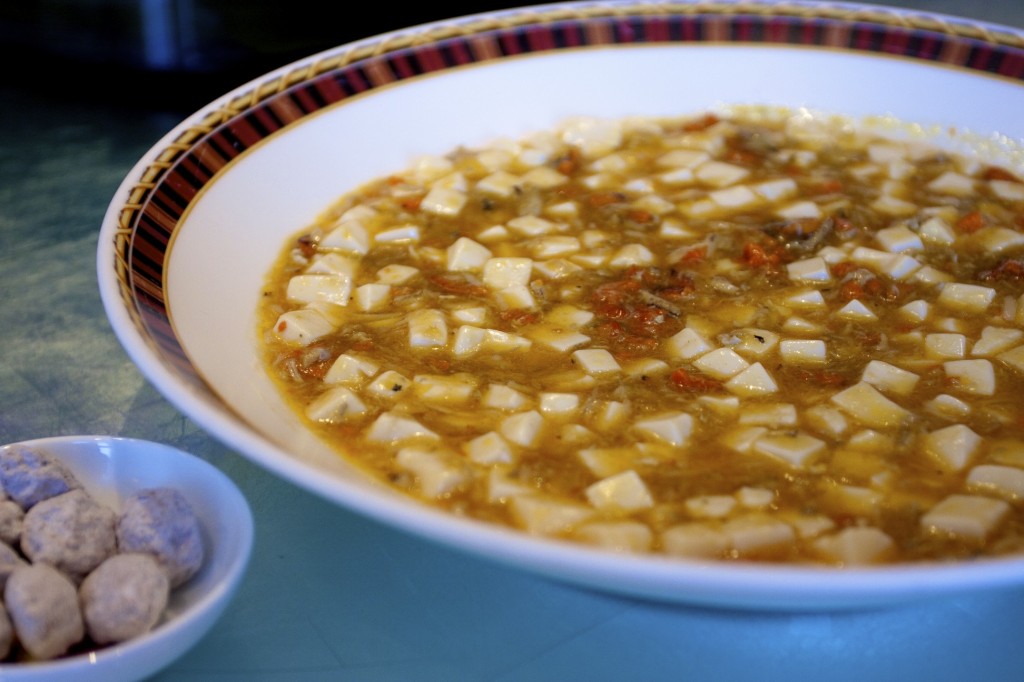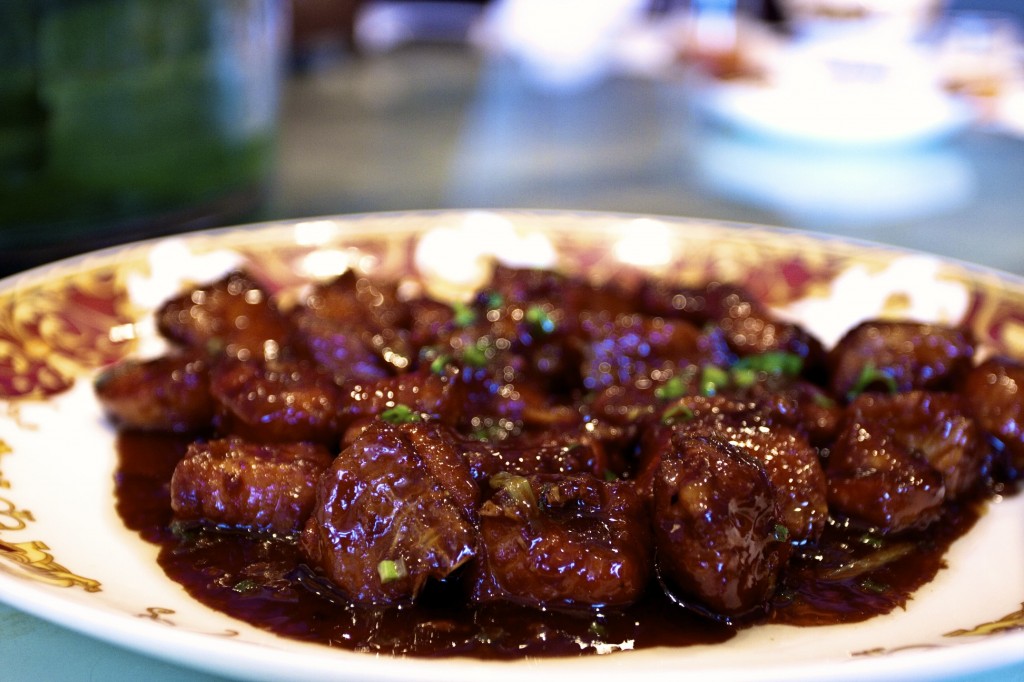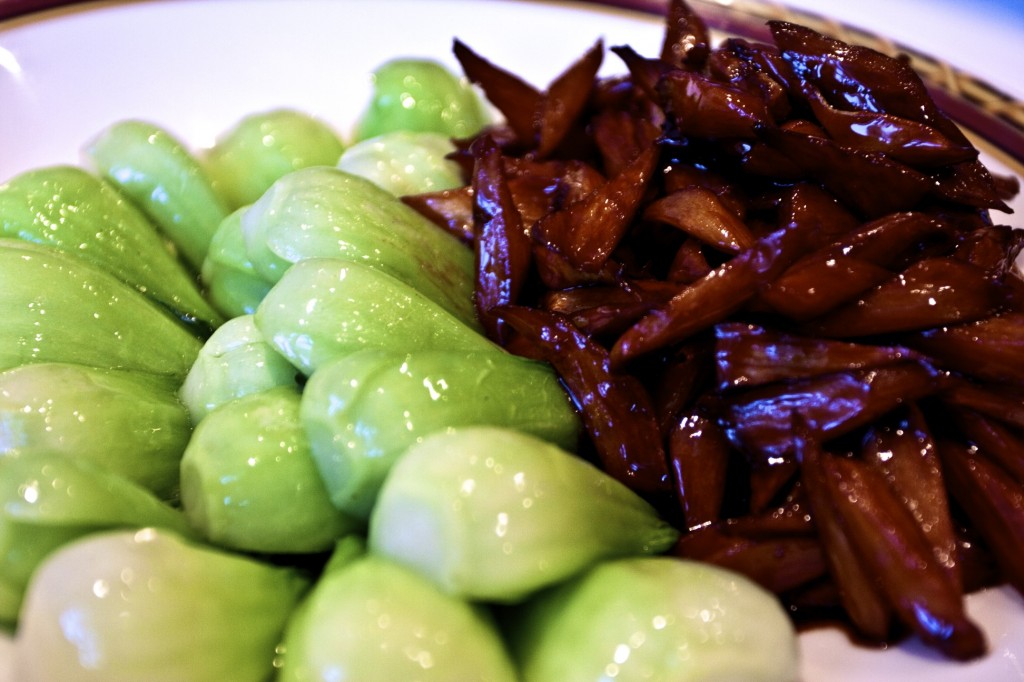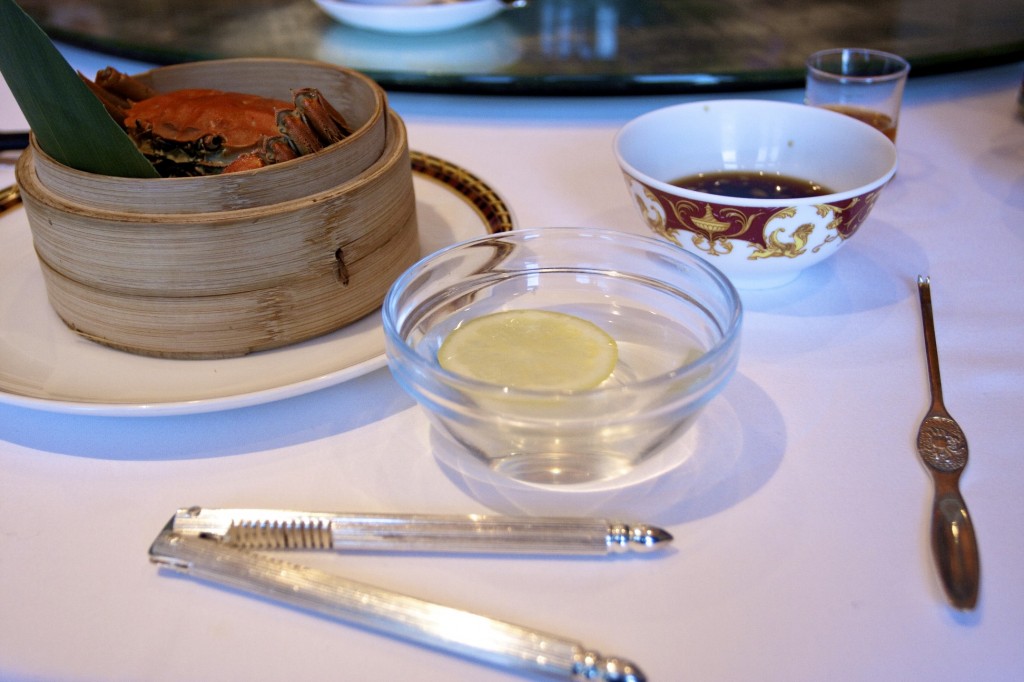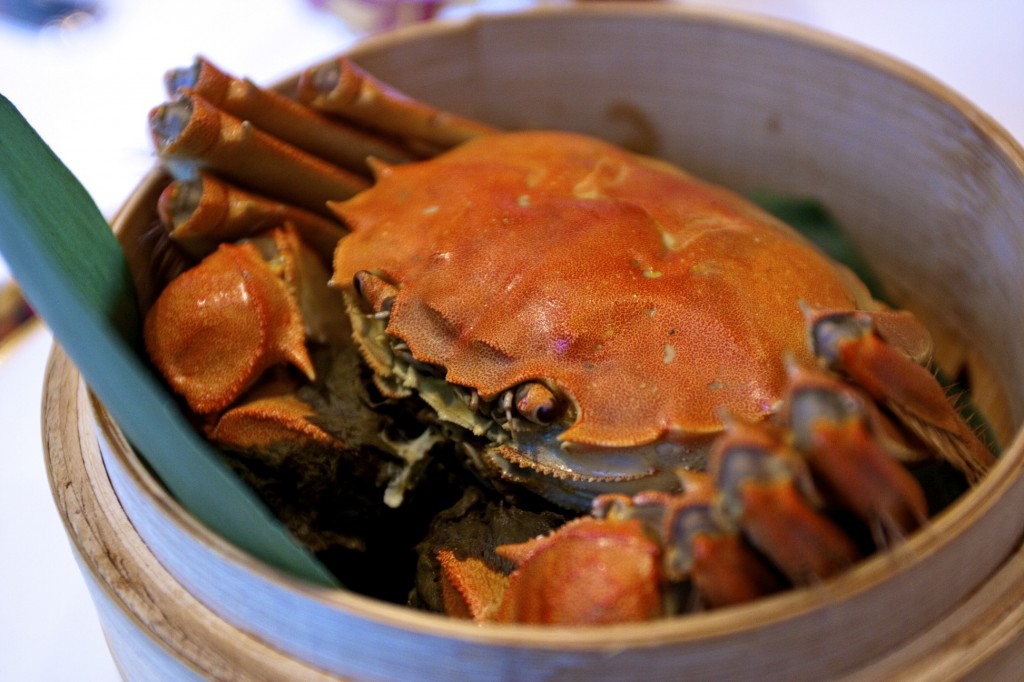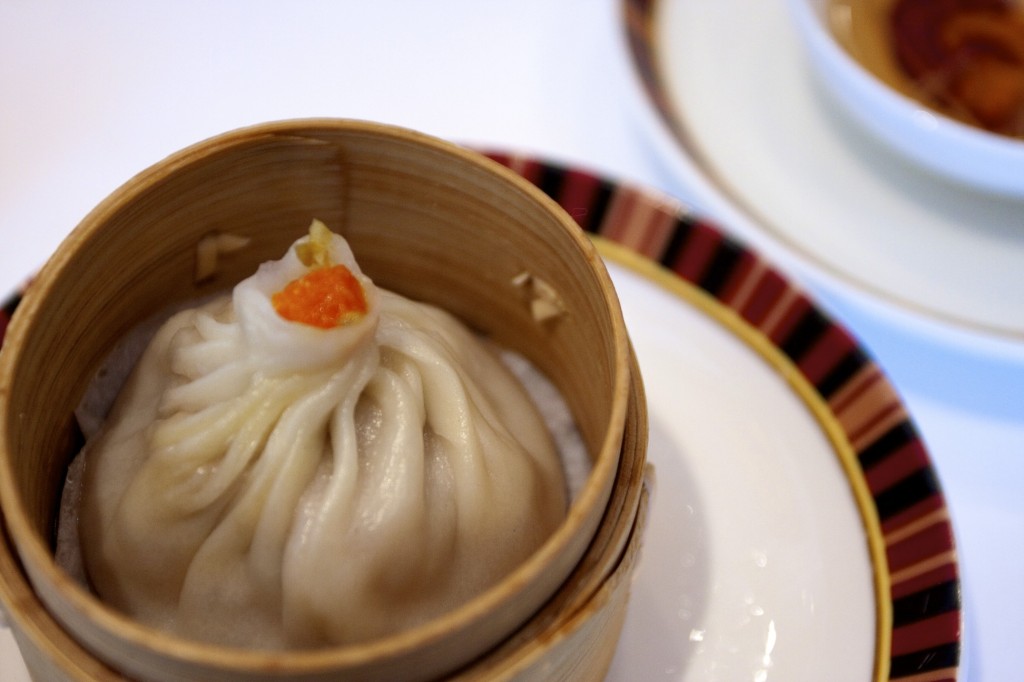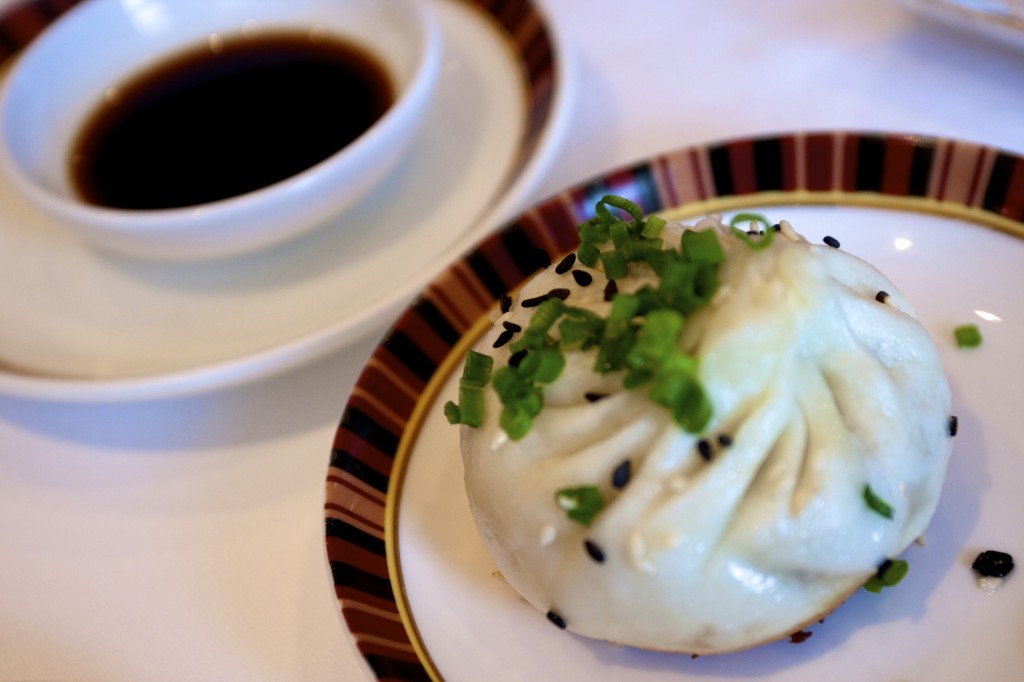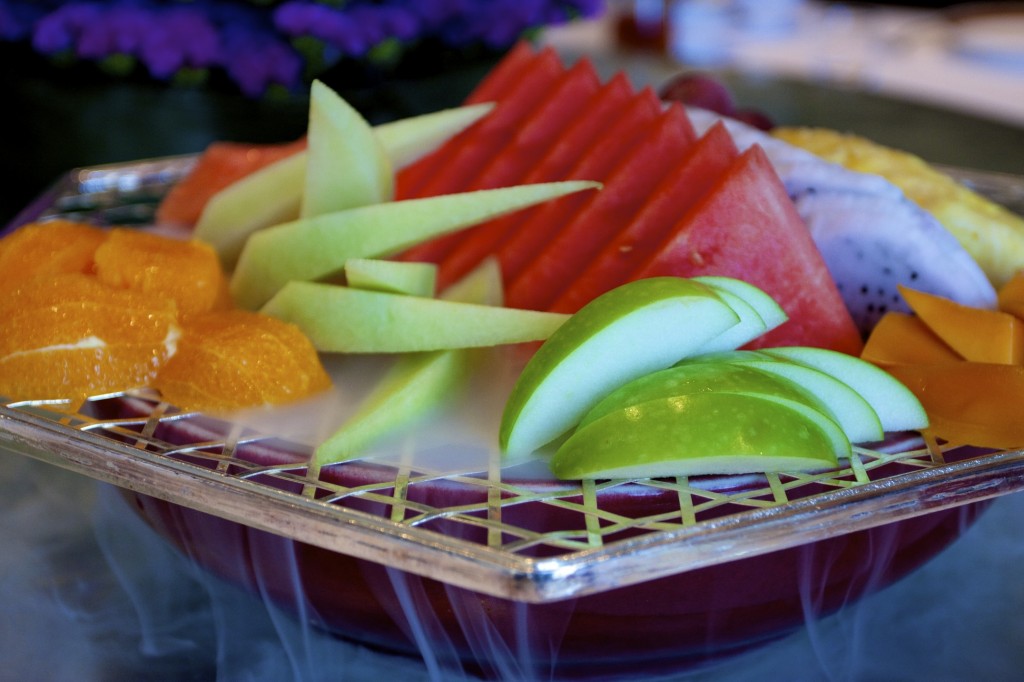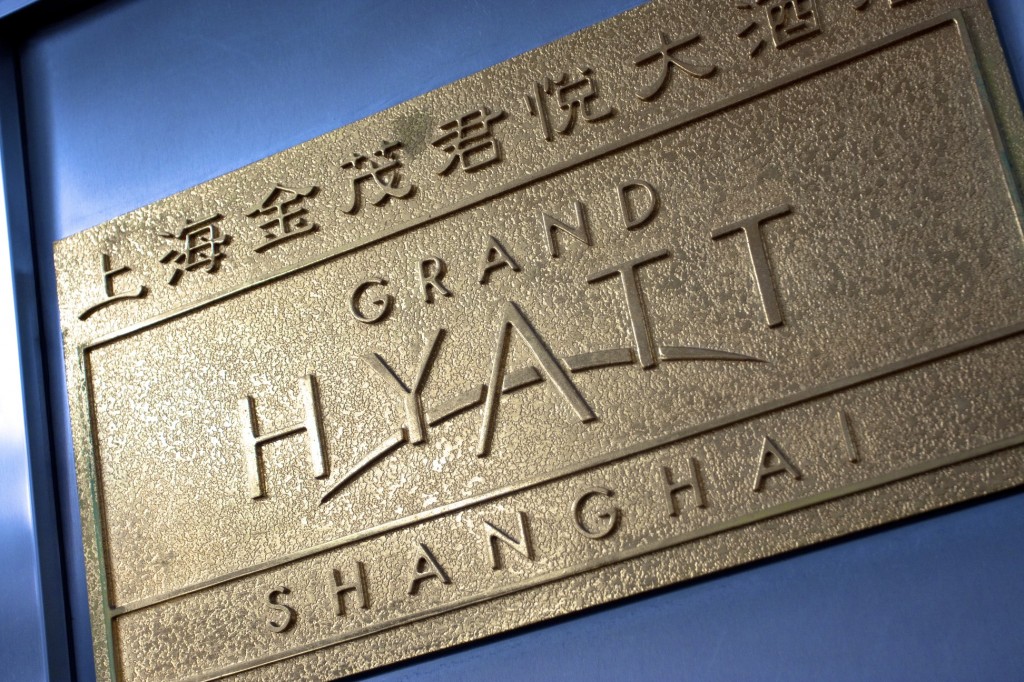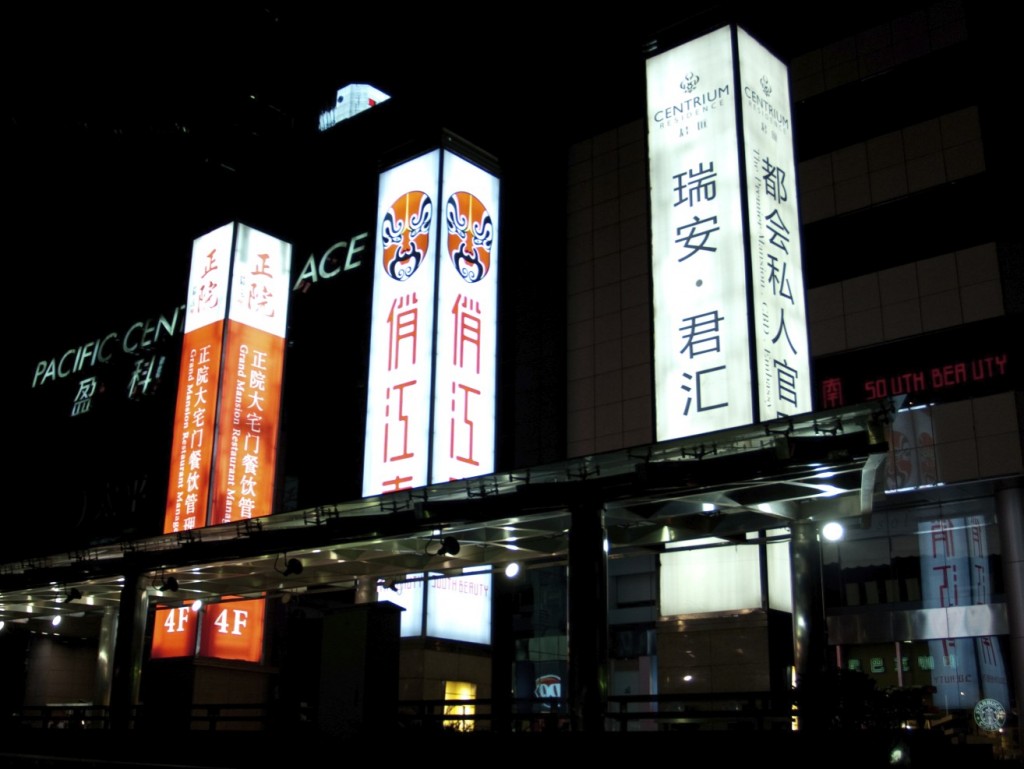 Chef/Owner: Zhang Lan Website: www.southbeauty.com Cuisine: Sichuanese
Chef/Owner: Zhang Lan Website: www.southbeauty.com Cuisine: Sichuanese
(In collaboration with Kevin from www.finediningexplorer.com)
The South Beauty chain is a success story that began over twenty years ago by a lady called Zhang Lan. With as little as USD 20,000, she opened her first restaurant in 1991 and has never looked back. She now has over 50 chains in her portfolio, racking up an annual revenue of circa USD 100 million, making her one of the most successful modern day female entrepreneurs of China.
For our first evening in Beijing we decided to take it easy and visit their branch in Pacific Century Place. I don’t tend to go to chain restaurants but made an exception on this occasion as it came highly recommended.
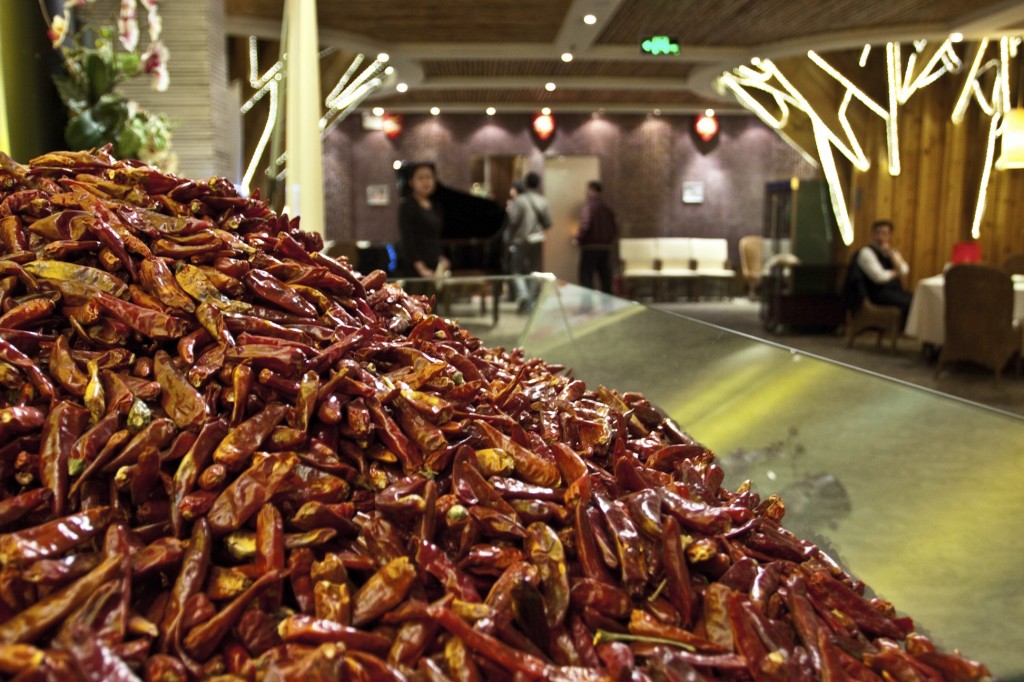 Given the mountain of chilli that greeted us at the entrance, you can probably guess what this restaurant specialises in. Infamously hot Sichuanese food of course! It may have been my foreign presence (given my dining companion was Kevin from Fine Dining Explorer who was undoubtedly Chinese looking) which instigated the waiter to ask if we wanted to tone down the spiciness in our meal. I didn’t want to exactly destroy my stomach on my first day so I took his advice. In hindsight, this was a very good suggestion!
Given the mountain of chilli that greeted us at the entrance, you can probably guess what this restaurant specialises in. Infamously hot Sichuanese food of course! It may have been my foreign presence (given my dining companion was Kevin from Fine Dining Explorer who was undoubtedly Chinese looking) which instigated the waiter to ask if we wanted to tone down the spiciness in our meal. I didn’t want to exactly destroy my stomach on my first day so I took his advice. In hindsight, this was a very good suggestion!
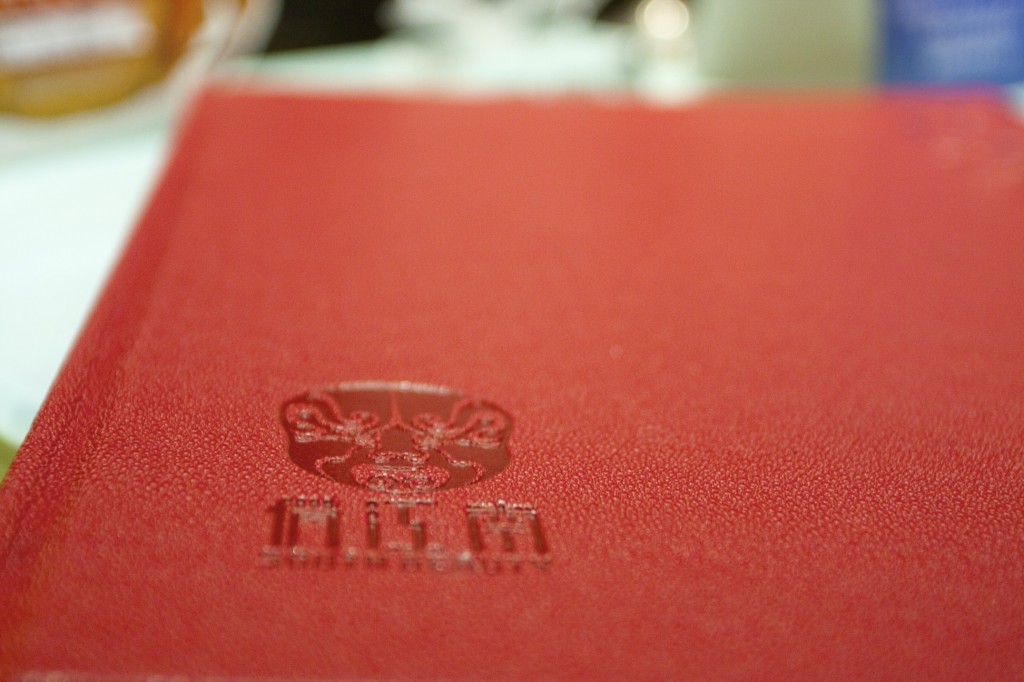 I left everything in the capable hands of Kevin as my Mandarin was not quite up to scratch. A few minutes of chatting with the waiter about classic dishes of Sichuan and we were off.
I left everything in the capable hands of Kevin as my Mandarin was not quite up to scratch. A few minutes of chatting with the waiter about classic dishes of Sichuan and we were off.
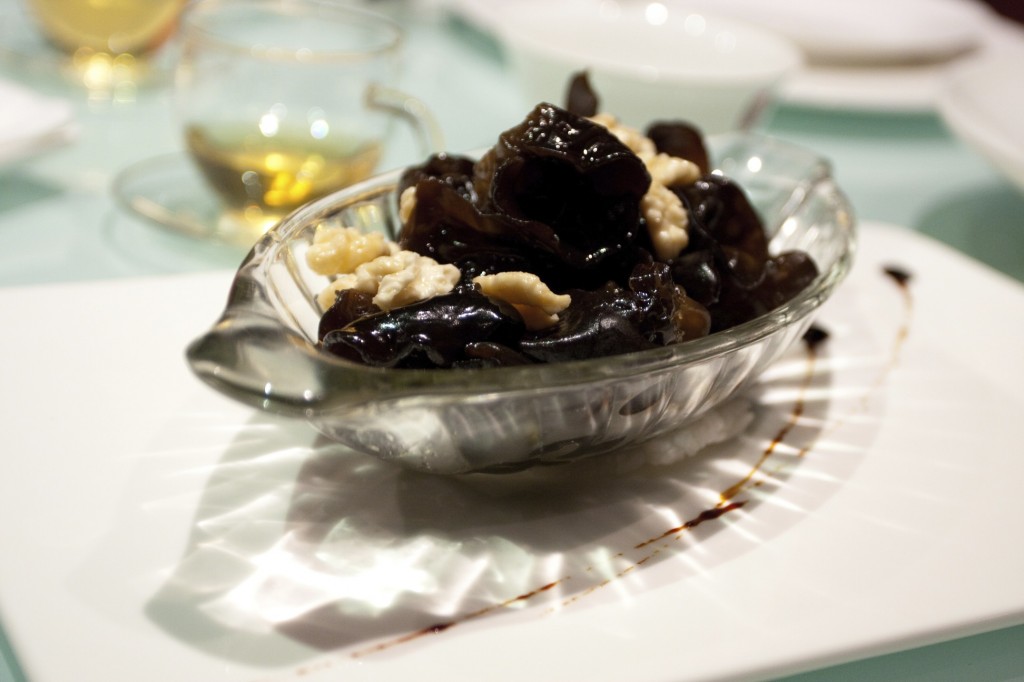 We kicked off with a few small dishes which were deceivingly spicy, including this Black Fungus that was served cold. Even Kevin had a nasty shock to his system as he took his first bite (although mind you, it turned out he had even less resistance than I did for hot food). I did enjoy the slithery and crunchy texture, although overall it did lack in flavour.
We kicked off with a few small dishes which were deceivingly spicy, including this Black Fungus that was served cold. Even Kevin had a nasty shock to his system as he took his first bite (although mind you, it turned out he had even less resistance than I did for hot food). I did enjoy the slithery and crunchy texture, although overall it did lack in flavour.
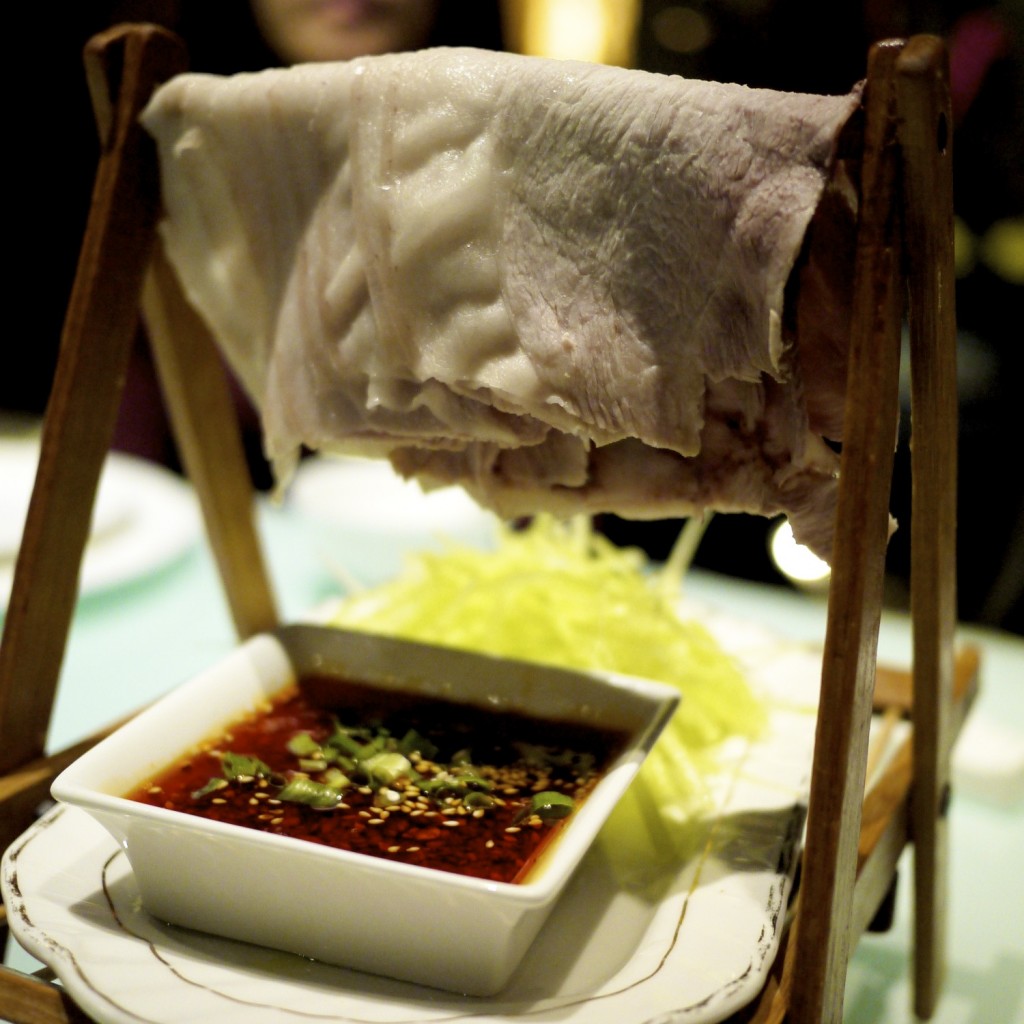 The next course, literally translated as Hanged Shirt White Meat, was one of their signature dish which consisted of thinly sliced pork served with shredded carrot and chilli sauce. It was a humorous take on how the Sichuanese hang their clothes. Who knew the Chinese were so humorous in their cooking? This dish was all about the sauce, made from the three spices of black, chilli and Sichuan peppers, as the pork was rather bland on its own. There was a very bizarre sensation of mouth numbing from the Sichuanese peppers.
The next course, literally translated as Hanged Shirt White Meat, was one of their signature dish which consisted of thinly sliced pork served with shredded carrot and chilli sauce. It was a humorous take on how the Sichuanese hang their clothes. Who knew the Chinese were so humorous in their cooking? This dish was all about the sauce, made from the three spices of black, chilli and Sichuan peppers, as the pork was rather bland on its own. There was a very bizarre sensation of mouth numbing from the Sichuanese peppers.
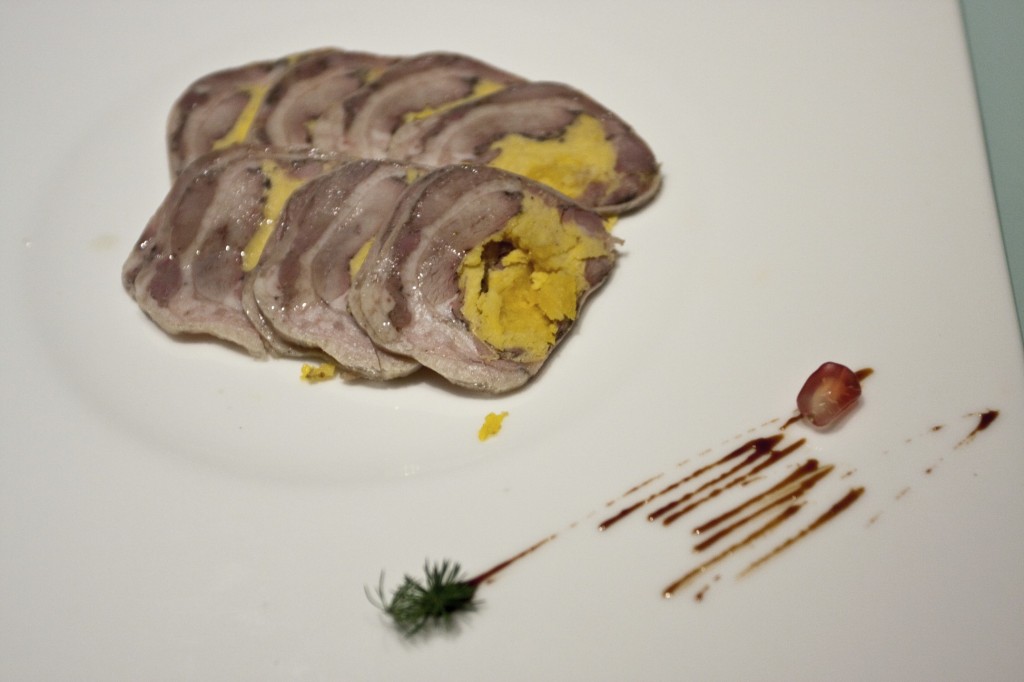 Next was some Southern Yangtze Duck Roll which wasn’t Sichuanese but came recommended. The slices of duck meat had been rolled around a salty yolk centre. It was also a welcomed rest from the intense heat of the food we already had. Our tongues were on fire but little did I know what was about to come…
Next was some Southern Yangtze Duck Roll which wasn’t Sichuanese but came recommended. The slices of duck meat had been rolled around a salty yolk centre. It was also a welcomed rest from the intense heat of the food we already had. Our tongues were on fire but little did I know what was about to come…
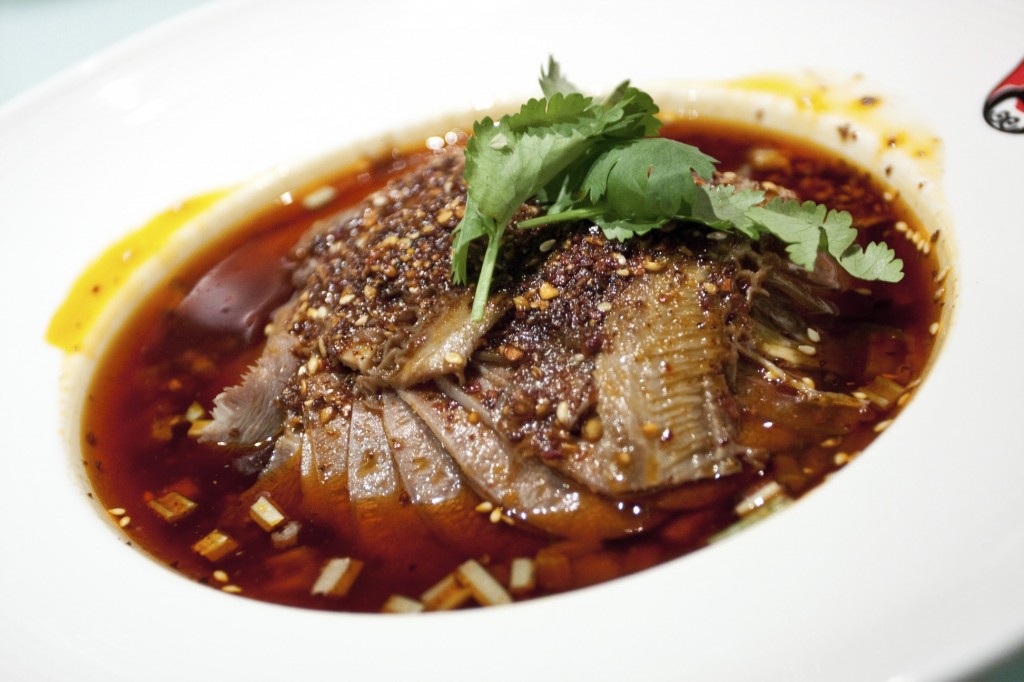 One of the best course of the evening was the Sliced Lung by the Married Couple (Fuqi Feipian) which was essentially sliced beef tongue and tripe served in a pool of Sichuan, chilli and black peppers. It was also the hottest item of the meal and possibly hotter than anything I had previously tried, ever…period. The dish dates back to the late Qing dynasty where a couple in Chengdu gained fame through their secret recipe of beef slices. As a result of some pranks played by mischievous children the name stuck, although I can assure you no lungs were in fact used in this dish ever. The meat used in this dish today is much higher quality slices of beef as well as a number of varieties of offal. I picked at this dish only every once in a while as I must confess the heat overwhelmed my palate, but it was so good I couldn’t stop.
One of the best course of the evening was the Sliced Lung by the Married Couple (Fuqi Feipian) which was essentially sliced beef tongue and tripe served in a pool of Sichuan, chilli and black peppers. It was also the hottest item of the meal and possibly hotter than anything I had previously tried, ever…period. The dish dates back to the late Qing dynasty where a couple in Chengdu gained fame through their secret recipe of beef slices. As a result of some pranks played by mischievous children the name stuck, although I can assure you no lungs were in fact used in this dish ever. The meat used in this dish today is much higher quality slices of beef as well as a number of varieties of offal. I picked at this dish only every once in a while as I must confess the heat overwhelmed my palate, but it was so good I couldn’t stop.
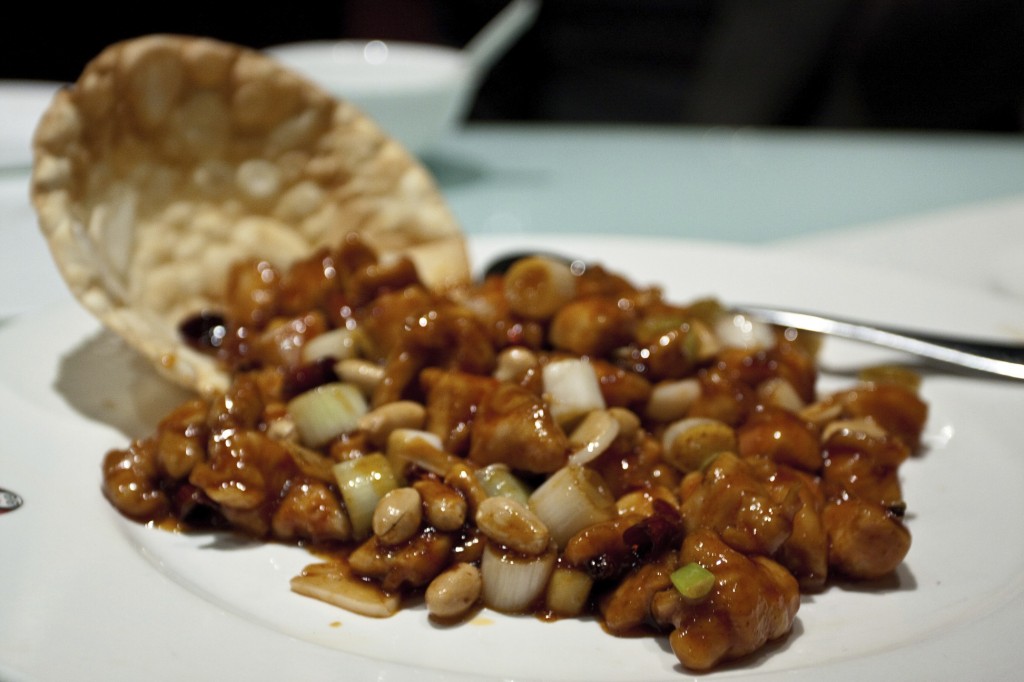 By the time our Kung Pao Chicken was served, we had become somewhat desensitised from the spice and heat. I couldn’t quite sense whether there was any heat to this but the chicken was moist and delicious, accompanied by a lovely mixture of crunchy peanuts and the sweet and crips spring onions.
By the time our Kung Pao Chicken was served, we had become somewhat desensitised from the spice and heat. I couldn’t quite sense whether there was any heat to this but the chicken was moist and delicious, accompanied by a lovely mixture of crunchy peanuts and the sweet and crips spring onions.
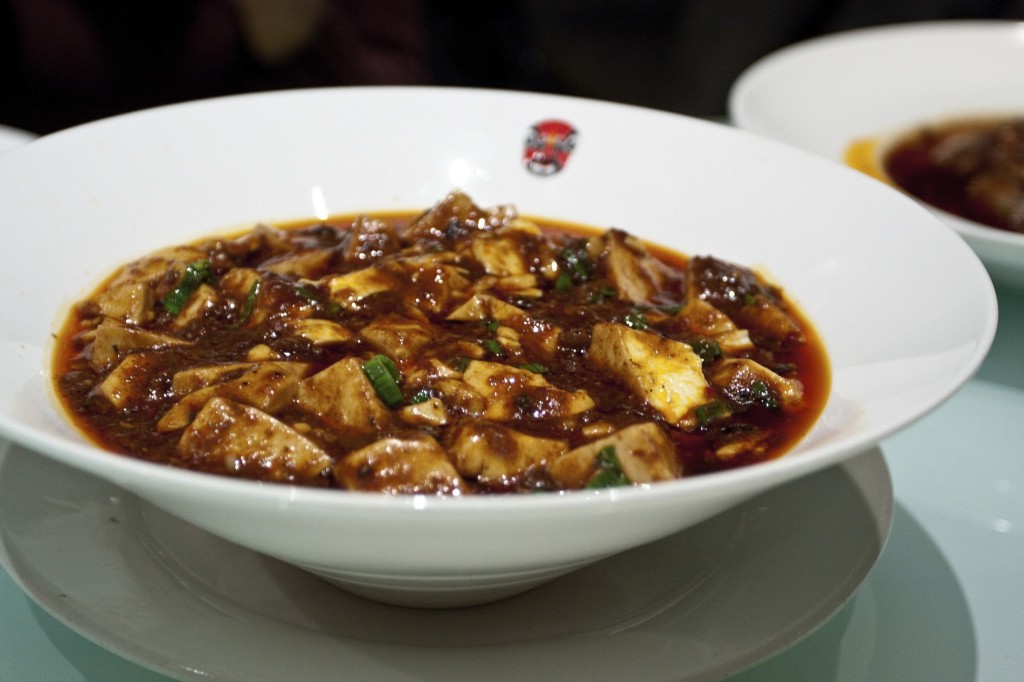 Given we were having Sichuanese I could of course not resist trying one of the most internationally iconic dish of the region, Ma Po Tofu. The dish is often described and rated by chefs for the seven specific Chinese adjectives: numbing, spicy hot, hot temperature, fresh, tender and soft, aromatic and flaky. This was nothing like any variation I had tried before. Whilst comparably hot to the beef slices, it was indeed fresh, aromatic and tender. I could however not finish this as Kevin at this point had given up after admitting defeat to the intense spice. It was too much to finish this on my own.
Given we were having Sichuanese I could of course not resist trying one of the most internationally iconic dish of the region, Ma Po Tofu. The dish is often described and rated by chefs for the seven specific Chinese adjectives: numbing, spicy hot, hot temperature, fresh, tender and soft, aromatic and flaky. This was nothing like any variation I had tried before. Whilst comparably hot to the beef slices, it was indeed fresh, aromatic and tender. I could however not finish this as Kevin at this point had given up after admitting defeat to the intense spice. It was too much to finish this on my own.
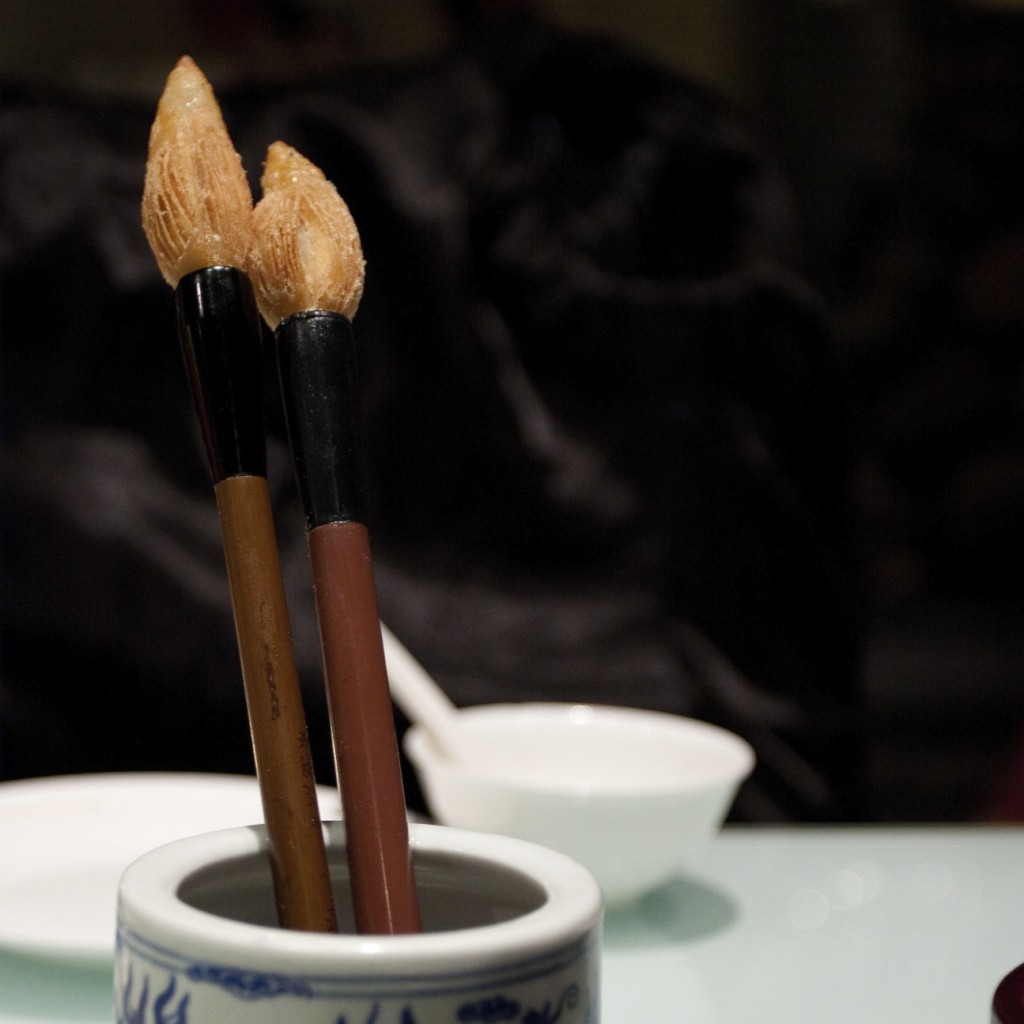 Our saving grace that evening was that dessert, at least, was not spicy… well mostly. Our first dessert course was another playful dish of the Four Treasures of the Scholar’s Studio which included the Paper or simply rice paper, Brush which had an edible nutty puff pastry head…
Our saving grace that evening was that dessert, at least, was not spicy… well mostly. Our first dessert course was another playful dish of the Four Treasures of the Scholar’s Studio which included the Paper or simply rice paper, Brush which had an edible nutty puff pastry head…
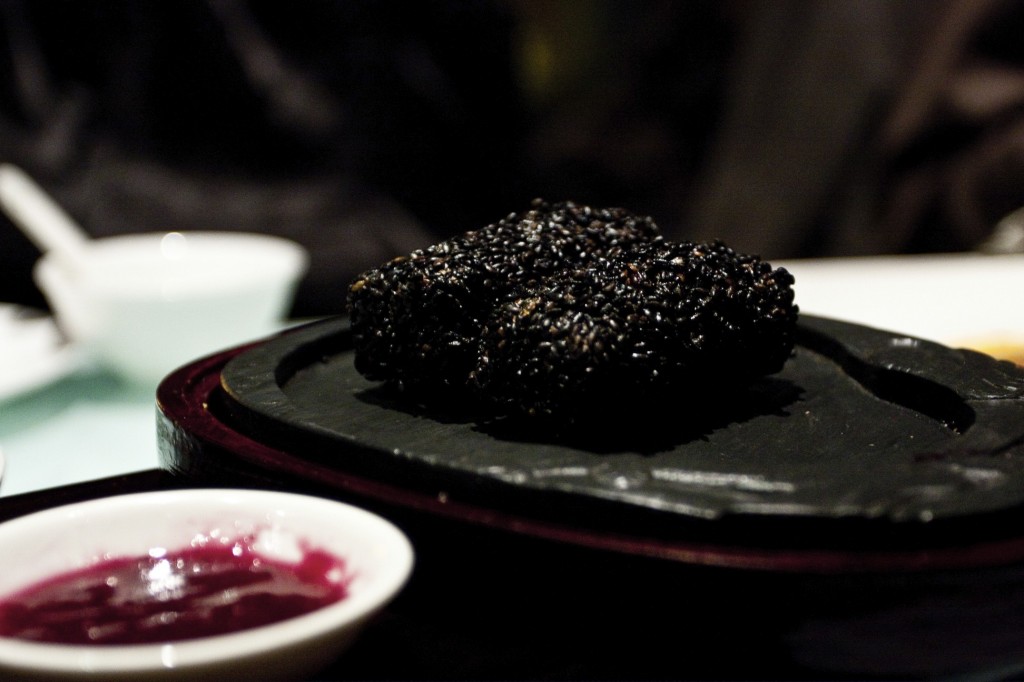 … Ink stick which was a sesame pancake…
… Ink stick which was a sesame pancake…
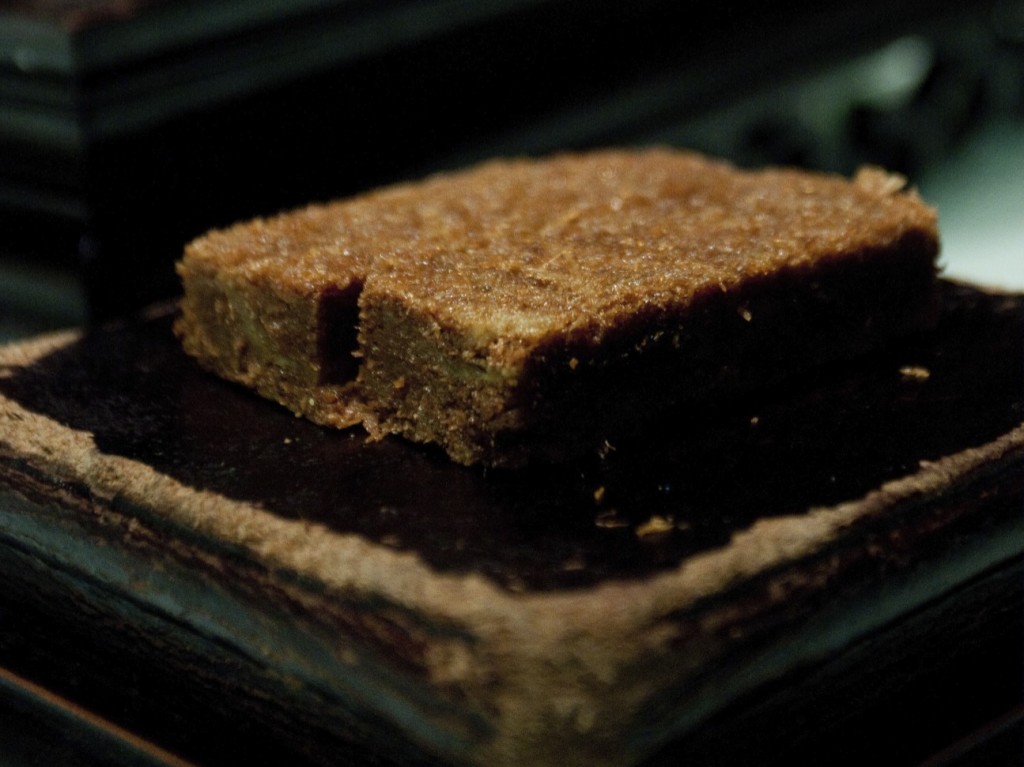 … and Ink Stone that had been made from dried mince pork. It had a very airy texture yet a contrasting crispy coating, and most surprisingly worked well as a sweet dish. I particularly liked the fact that the chef had a sense of humour which wasn’t found in majority of the other restaurants we had visted subsequently in China.
… and Ink Stone that had been made from dried mince pork. It had a very airy texture yet a contrasting crispy coating, and most surprisingly worked well as a sweet dish. I particularly liked the fact that the chef had a sense of humour which wasn’t found in majority of the other restaurants we had visted subsequently in China.
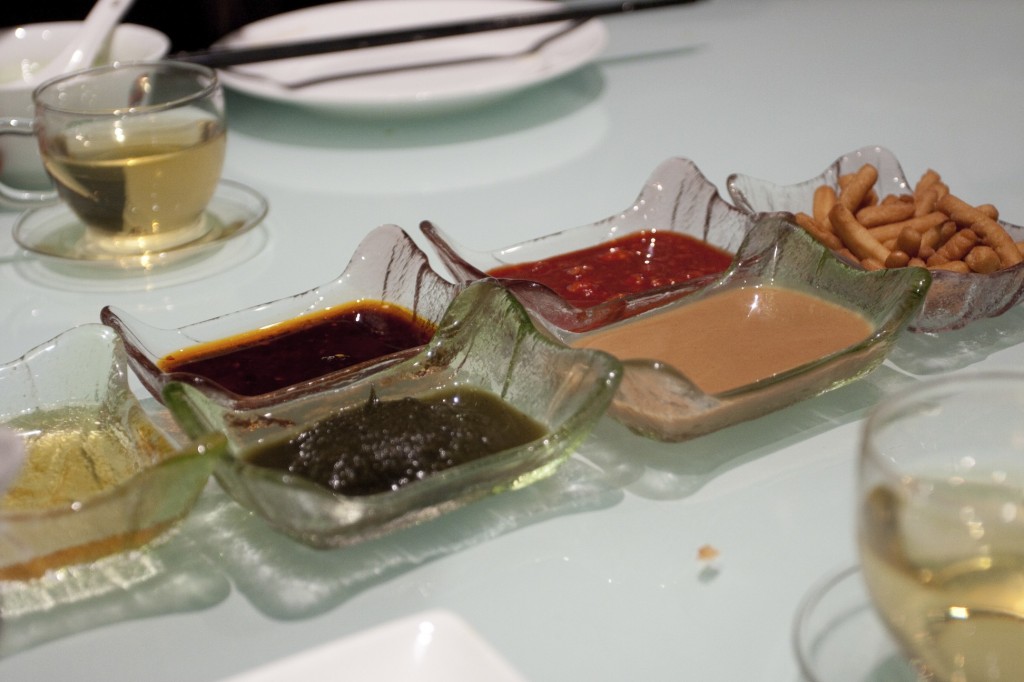 For our last dessert we were presented with a variety of toppings consisting of Peanut butter, chive sauce, fermented bean curd, deep fried doughs, honey…. and surprise surprise, spicy sauce. This was to go with our…
For our last dessert we were presented with a variety of toppings consisting of Peanut butter, chive sauce, fermented bean curd, deep fried doughs, honey…. and surprise surprise, spicy sauce. This was to go with our…
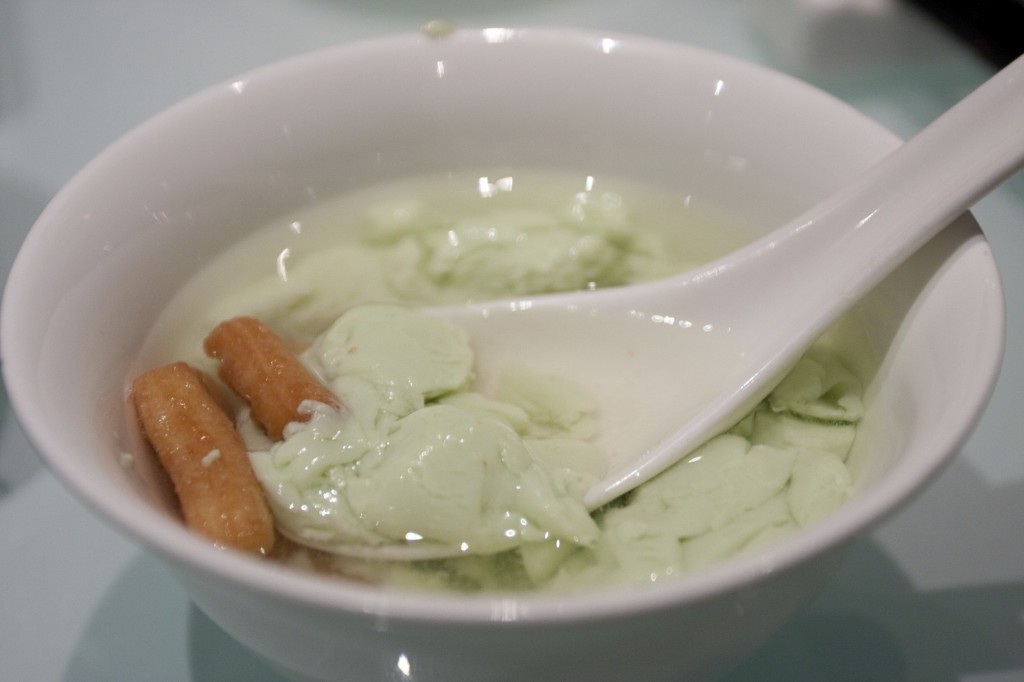 … bowl of Tofu which had been prepared next to our table. I wasn’t a bit fan of this dish. Perhaps it was me, but I found it rather bland, unexciting and one dimensional (even with the spicy sauce!).
… bowl of Tofu which had been prepared next to our table. I wasn’t a bit fan of this dish. Perhaps it was me, but I found it rather bland, unexciting and one dimensional (even with the spicy sauce!).
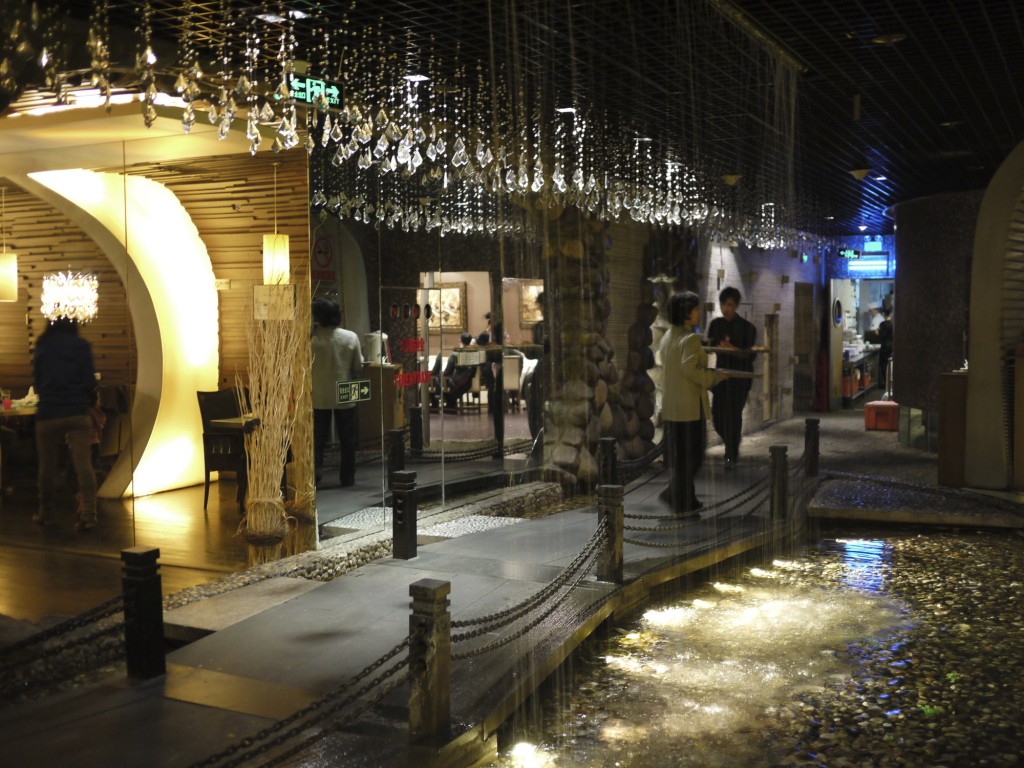 This was certainly not the culinary highlight from our trip, but what impressed me was the calibre of cooking for a chain restaurant. I did of course compare the dishes here against what previously had been presented to me as authentic Sichuanese, both in Asia and overseas, and relied on Kevin’s vast knowledge of regional Chinese cuisine. I’d certainly prefer this place over any other Sichuanese restaurants I’ve previously been to and even the tacky decor would not put me off from another visit to try other dishes… my intestinal lining however may perhaps disagree…
This was certainly not the culinary highlight from our trip, but what impressed me was the calibre of cooking for a chain restaurant. I did of course compare the dishes here against what previously had been presented to me as authentic Sichuanese, both in Asia and overseas, and relied on Kevin’s vast knowledge of regional Chinese cuisine. I’d certainly prefer this place over any other Sichuanese restaurants I’ve previously been to and even the tacky decor would not put me off from another visit to try other dishes… my intestinal lining however may perhaps disagree…

